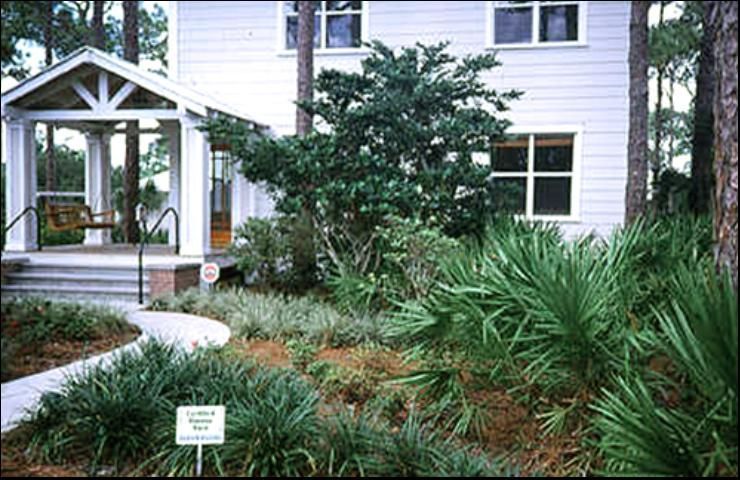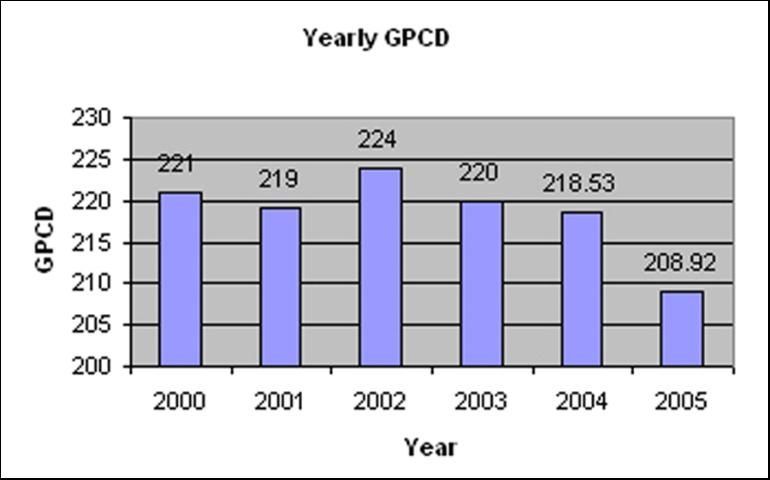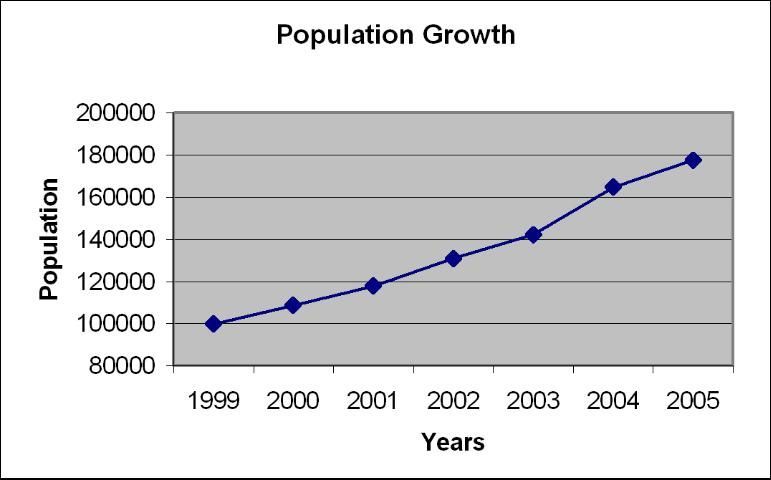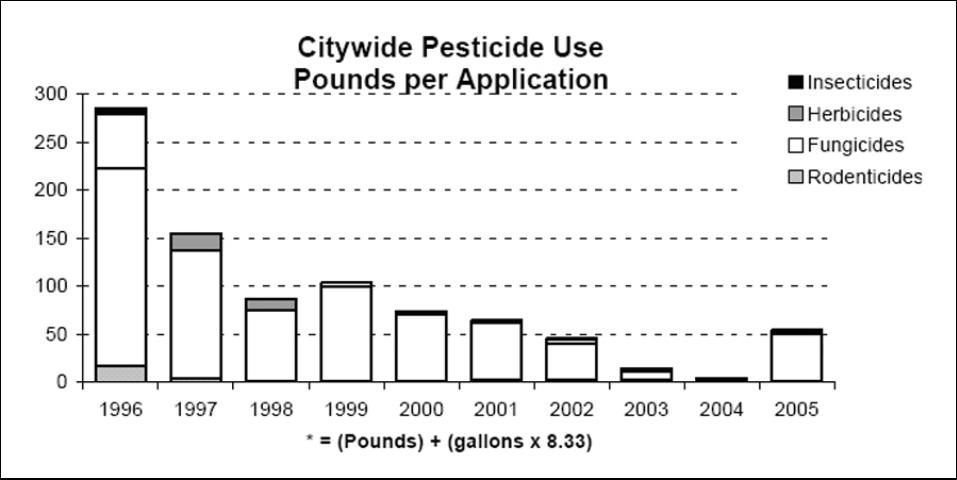
Florida Yards & Neighborhoods, 1999
Policies of local governments can play a major role in creating opportunities for sustainable practices. In addition, governments can take the lead in sustainable planning and development in designing public facilities or government office buildings according to sustainable design standards. By taking the lead in crafting unique policies and implementing ways for government to reduce energy consumption or negative environmental impacts, a local government can initiate small changes that will lead to a sustainable community.
The purpose of this document is to compile and summarize city and county ordinances that provide incentives or regulations to promote sustainable development at the landscaping level. City or county officials can use this document to aid in drafting sustainable development policies for their local area. The goal of this document is to increase knowledge and awareness of current policies and ordinances developed around the theme of sustainable development and conservation.
The cost of maintaining a landscape for a year averages $500 or more including pesticides, fertilizers, water, and mowing. The pollution created from a gas-powered mower in one year is equivalent to a car driving 14,000 miles (Chiras and Wann 2003, 29). In order to gain any freedom from all the expenses and environmental impacts, creating a lawn with few chemicals and with native plants helps reduce the need to water and frequently use mowers (Chiras and Wann 2003, 57).
According to the book Redesigning the American Lawn (Bormann, Balmori and Geballe 1993) a lawn mower pollutes in one hour as much as a car driving 350 miles, between 30 and 60 percent of fresh water is used on lawns, and $25 billion are spent annually in the lawn care industry. With careful planning, landscapes could require less irrigation, no need for mowing, and reduced dependence on chemical fertilizers and pesticides.
The landscaping ordinances below include policies from Sarasota County, FL; Pasco County, FL; Sanibel, FL; and Gilbert, AZ. These policies regulate type of vegetation used in landscapes and methods used to irrigate the landscapes. Also included is a summary of an Integrated Pest Management ordinance from San Francisco, CA, which regulates the use of pesticides on public lands.
I. Water-Efficient Landscaping Regulations
Implemented: 13 November 2001, Sarasota County, FL
Population 2001: 333,287
Population 2005: 366,256
(US Census Bureau)
Purpose
To require landscaping practices that conserve water resources. This ordinance is mandatory for all public and private construction.
Summary
This ordinance applies to the irrigated portions of a site for redevelopment, reconstruction, or expansion; all new single family and multifamily residential structures; and additions to residential buildings that amount to 50% or more of the assessed value of the existing building.
Key provisions in the ordinance include (1) plants with similar water requirements must have separate irrigation systems and be planted in the same zone; (2) turfgrass and other highly irrigated plants are limited to 50% or less of the irrigated area; (3) impervious surfaces are limited to less than 10% of the landscaped area; (4) turf areas will be no narrower than four feet except next to contiguous properties; (5) no plants will be planted or sprayed from irrigation systems applied under roof overhang; (6) pop-up sprinklers and rotors will not be mixed in the same zone; (7) reclaimed or other non-potable water sources should be used for irrigation if available; (8) micro-irrigation systems are required for all plant beds and the system must include a filter; (9) rain sensing shutoff device is required for all automatic irrigation systems; and (10) the builder will provide a landscape maintenance checklist and information packet to the property owner.
The ordinance originated from the Southwest Florida Water Management District encouraging local governments to consider adopting water-efficient landscaping ordinances. Public workshops were used to engage the community about a potential water-efficient landscape ordinance. The ordinance was developed with inputs from different stakeholders such as the home building industry, landscaping, and irrigation professionals.
The builder, landscape architect, irrigation contractor or landscape contractor that is certified by the State of Florida or Sarasota County will conduct the final inspection and the county will provide a certificate of compliance.
Current Impact
All county buildings and private developments issued building permits after January 13, 2002, currently comply with the ordinance.
Pros and Cons
This mandatory ordinance did not receive any opposition because stakeholders were involved in the development of the ordinance. Also, UF/IFAS Extension agents provided continuing education for builders, contractors, and county building inspectors about water-efficient landscaping practices and the benefits of using water-efficient landscaping. The Home Builders Association provided help in integrating this ordinance with current building practices.
The ordinance is self-certified by the builder or irrigation/landscape contractor. The builder fills in the checklist for the water-efficient landscape and irrigation plan. Many of the building inspectors that go through the checklist only look at the high points; however, smaller provisions may fall through the system. For example, the inspectors usually can observe that turf is limited to 50% of the irrigated area and that micro-irrigation is applied to landscape beds. Often, inspectors will overlook the provision that turf will not be narrower than 4 ft. The only way to observe that pop-up sprinklers and rotors are not mixed in the same area is to turn on the system, which many inspectors fail to do during their inspection.
Contact Information
UF/IFAS Extension Sarasota County
941-861-9900
Original Ordinance Language
http://library.municode.com/index.aspx?clientId=11511&stateId=9&stateName=Florida
Search Under: Chapter 22 Buildings and Building Regulations; Article VI Water-Efficient Landscaping Regulations
II. Vegetation Standard
Implemented: 2 March 2004, Sanibel, FL
Population 2004: 6,112
Population 2005: 6,072
(US Census Bureau)
Purpose
To increase retention of native plants in all developments and prevent use of invasive exotics. The ordinance is mandatory for all types of developments.
Summary
Key provisions of the landscaping requirements include (1) use of native plants is encouraged for all landscaping projects; (2) planting invasive exotic vegetation is prohibited; (3) new development or redevelopment of a parcel requires at least 75% by count of all in-ground shrubs, groundcover, and all trees must be native species (the remaining cover can be non-competing exotic species); (4) landscaping in a gulf beach zone shall only include native species. In-ground native plants installed or existing on a parcel to meet landscaping requirements will be distributed so that 75% native plants by count will be met in each of the following categories: trees, shrubs, and groundcover. All development applicants must remove all invasive exotics (listed below) from within the boundaries of the parcel proposed for development or alteration. These sites must be kept permanently free of those particular exotics. If the estimated cost of removing the exotics exceeds the cost of development, then the property owner will be given three years to remove the invasive exotics and keep the site permanently free of invasive exotics.
This ordinance defined invasive exotics as undesirable species, which out-compete or otherwise displace native vegetation. Planting or transplanting invasive exotics is prohibited by this ordinance. Invasive exotic species include Brazilian pepper, Melaleuca, Earleaf acacia, Java plum, Exotic inkberry, Lead tree, Bowstring hemp, and Air potato.
This ordinance originated from articles in the city's Comprehensive Plan (1997) to protect native vegetation and remove invasive exotics. The community as a whole supported these efforts because nearly 2/3 of the island is under conservation.
During the planning phase, a proposed vegetation plan is submitted prior to any development. A member of the vegetation committee approves the vegetation plan. Changes may be submitted to the committee during the planning and construction phases. After development is completed, a member of the vegetation committee will then inspect the site before a certificate of occupancy is issued. The certificate of occupancy may be withheld if the landscape does not comply with the ordinance. Enforcement of the vegetation standards is the job of the city manager or designee. Penalties for not following the ordinance include replacing foliage, wildlife habitat, and wildlife food source (fruit) with the same type of vegetation that was destroyed; replacement vegetation shall be of the same size and proportion of the destroyed vegetation; and replacement vegetation may be required off-site if there is not sufficient area on-site.
Current Impact
The city does not keep track of the impacts that this ordinance has on the area. Currently 7,800 acres of land on the island are under conservation. The city hopes to preserve native plants and prevent invasive exotics from disrupting this conservation area by restricting landscaping of developments.
Pros and Cons
Since the majority of the island is under conservation, the community supported efforts to increase native species and decrease exotics. Initially, some builders and private property owners did complain about the mandatory restrictions in the ordinance.
Some developers found a loophole in the ordinance by using native trees to include the 75% native cover for the site. Then they could use any type of non-native for the ground cover. City officials amended the code to state that 75% native plants had to be used in three different categories: large trees, small trees and shrubs, and ground cover.
Contact Information
James Evans, Sanibel Environmental Planner, 239-472-3700
Original Ordinance Language
http://library.municode.com/index.aspx?clientId=10937 [24 September 2012]
Search Under: Chapter 122 Vegetation; Article III. Standards.
III. Landscaping and Irrigation
Implemented: 26 February 2002, Pasco County, FL
Population 2002: 372,908
Population 2005: 429,065
(US Census Bureau)
Purpose
To reduce water consumption by providing minimum standards for the development, installation, maintenance, and preservation of water-efficient landscaping and irrigation systems in residential lots. This ordinance is mandatory for all single or multi-family residential developments or commercial developments.
Summary
The ordinance applies to single family or two-family residential lots with irrigation systems and Class I, II, and III developments (i.e., small to large commercial areas). The county requires the contractor to submit the completed certification of compliance with all irrigation and landscape components. Irrigation contractors fill out a self-certification application and the final inspection will be conducted by a county-approved, certified inspector. After the final inspection, the county will issue a certificate of compliance.
Key provisions of the ordinance include (1) maximum of 50% of the plant materials used can be non-drought-tolerant; (2) turf grass with excellent drought tolerance may exceed the 50% rule; (3) minimum of 30% of the plant material, other than trees and turf grass, shall be native; (4) turf grass shall be on separate irrigation zones from other landscape zones; (5) narrow landscaped beds (4 feet or less) shall not be irrigated unless micro-irrigated and turf grass areas shall not be less than four feet wide; (6) sprinkler spacing shall not exceed 55% of the sprinkler's diameter of coverage; (7) sprays and rotors shall have matching application rates within separate zones; (8) sprinklers shall not spray water onto paved areas; (9) a functioning rain shutoff device shall be utilized in automatic irrigation systems; (10) organic mulch shall be at least 3 inches thick; (11) maximum of 50% of the on-site green space shall be allowed to utilize irrigation techniques other than micro-irrigation; and (12) where available, reclaimed water will be utilized for irrigation.
Also included in the ordinance are specifics for minimum interior landscaping required for vehicular use areas; building perimeter landscaping for automotive service stations and convenience stores with gas pumps; landscape buffering and screening; and water management systems.
The ordinance originated from the Southwest Florida Water Management District encouraging local governments to consider adopting water efficient landscaping ordinances. The Native Plant Society in the county also encouraged an ordinance to include using native plants. Model landscape ordinances were used as a base to develop the language for this ordinance.
Current Impact
The county is working on putting together water history data for Pasco County. A limited number of inspectors have made it difficult to inspect all provisions in the ordinance. More inspectors and randomized inspections of developments could help increase compliance with the ordinance. With an estimated 57% of new homes with irrigation systems in Pasco County, compliance with the ordinance could provide significant water reductions.
An evaluation of the ordinance by Tampa Bay Water revealed areas where builders complied with the ordinance and areas where they did not comply. Generally the sites evaluated met the requirements for sprinkler spacing, overlap and separate zones for rotors and sprays and no rotors or sprays irrigating areas less than 4 feet wide. However, several sites did not comply with the ordinance by not having separate irrigation zones for turf grass and tree/shrub beds; water being applied to impervious areas; not having micro-irrigation in plant beds; exceeding the percentage of irrigated area in turf grass; not meeting the 30% requirement of native plants; and not meeting the standard of 50% of the irrigated system to be micro-irrigation.
Pros and Cons
The ordinance was not accepted with open arms and several residential and commercial developers and even residents have used innovative techniques in order to not comply. For example, developers would plant less-water-intensive grass such as bahia grass in areas without irrigation. After the home is sold, the owner will remove the bahia grass and plant St. Augustine grass and extend the irrigation system. Initially, not much input from the building and landscape industry was provided. In order to supplement, public meetings with builders and landscape architects were held and their input will be used to make amendments to the ordinance.
One complaint against the landscape and buffering section came from the fact that commercial developments require landscape buffering even on roads through natural areas. This seems redundant since the natural area is a natural buffer area.
Currently the irrigation contractor fills out the self-certification process. An amendment will change this process by requiring the builders to certify the landscape and irrigation systems. This will put more pressure on the builders to ensure compliance with the ordinance before the county inspectors conduct the final inspection. A member of the county's inspection team will inspect and certify the landscape during the final sign off.
Case Study
In east Pasco County, a development site uses a variance on the landscaping ordinance. The development's first phase was approved before the ordinance and does not have to comply with the new code but other phases were not exempt. The developer argued that because the development was approved that the entire development should be exempt.
A compromise was made in which the developer could exceed the 50% non-drought-tolerant plant rule. The Development Review Committee approved a variance to the requirements based on three criteria: (1) all future building on the entire development must use soil moisture sensors; (2) amendments to the deed restrictions must require soil moisture sensors; (3) must promote soil moisture sensors in all homes with education materials.
Another development has made a request similar to this one and will have the same conditions applied to the variance from the code.
Contact Information
Hailey Buffham, Florida-Friendly Landscaping™ Program Coordinator 352-518-0156
Original Ordinance Language
http://www.pascocountyfl.net/devser/sd/dr/ldc/l603.pdf [No longer available online].
IV. Water Conservation
Implemented: 28 November 2000, Gilbert, AZ
Population 2000: 109,697
Population 2005: 173,989
(US Census Bureau)
Purpose
To reduce water consumption in residential and nonresidential developments. This ordinance is mandatory for landscaping in all city or private developments.
Summary
The ordinance creates a city water conservation officer that oversees the implementation of water conservation practices. The ordinance prohibits covenants, conditions, and restrictions (CCRs) that require water-intense landscaping or prohibit low-water-use landscaping.
Limitations that exist on water features such as pools, ponds, fountains and waterfalls are outlined in the ordinance. Water features must comply with the following requirements: (1) a permit to install a water feature must be obtained from the building and code compliance office; (2) water feature shall be designed with catch basins that maximize use of recycled water; (3) water feature must use water equipment that will minimize leakage; (4) water feature shall reuse filtered backwash; (5) water feature shall be operational only during normal business hours and shall be equipped with an automatic timer.
Key provisions for residential landscaping in new single family or multi-family developments include (1) water-intensive landscaping in common areas shall not exceed 10%; (2) if reclaimed water is used then water-intensive landscaping may be increased to 50%; (3) amount of reclaimed water will be no more than 3 times the calculated sewage output from the development; (4) turf is prohibited in all rights-of-way; (5) only low water plants will be used in the remaining landscape area; and (6) all irrigation systems must be efficient irrigation systems. Model homes in residential developments must follow the same provisions above except combined turf and water surfaces of water features shall not exceed 20% of the landscape.
Key provisions for commercial landscaping include (1) water-intensive landscaping will not exceed the area calculated by adding 10,000 sq. ft. to 20% of the landscape area and if the lot is less than 10,000 sq. ft. water-intensive area shall be 10% or less; (2) hotels and motels follow the same rule except 20,000 sq. ft. replaces 10,000 sq. ft.; (3) developments that use reclaimed water may extend water-intensive landscaping to 50% of the total landscape area; (4) only low-water-use plants may be used in the remaining landscape area; (5) schools, parks, cemeteries, golf courses and common housing areas that exceed ten acres of water-intensive landscaping are exempt and shall be regulated by the state; and (6) all irrigation systems must be efficient irrigation systems. Non-residential developments that estimate an annual average of 9,000 gallons or more per day must submit a water use plan before being issued a building permit.
The ordinance originated because the city of Gilbert exceeded their allotted gallons per capita per day (GPCD). The per capita in the GPCD is per person in each residential unit. This amount is set based on the population, and when a city exceeds the set limit they must adopt certain reasonable stipulations that will reduce water consumption. The city of Gilbert put these stipulations into an ordinance.
Current Impact
Although the annual GPCD has been reduced since the ordinance was implemented, officials cannot clearly indicate that the lower GPCD is the result of the ordinance. Currently the city does not have a consistent method for measuring the impact of the ordinance besides measuring the annual GPCD (Figure 2 and Figure 3).

Credit: Karen Young, City of Gilbert, AZ, 2004

Credit: Karen Young, City of Gilbert, AZ, 2004
Pros and Cons
Initially the program had little effect on some developers who had projects approved before the ordinance was implemented. These projects were grandfathered into the old codes. One development that was grandfathered was a 3,000-acre area.
The original language created in 2000 was amended in 2006 to expand on the definitions provided in the ordinance and include more detail. For example, "active recreational area" was amended to include turf area and several new definitions were added such as cap water supply, reclaimed water and water-intensive landscaping. Within developments, the model homes are required to have all irrigation and landscape plans approved by the planning department before receiving a building permit. Currently the planning department is understaffed and the planning department does not approve the model home irrigation and landscape plans. Instead, the Water Conservation Department is tasked with inspecting and approving the model home irrigation and landscape plans. This task is outside the Water Conservation Department's normal duties.
Originally, the language of this ordinance prohibited CCRs that restrict low-water-use landscaping or require water-intensive landscaping. However, developers got around this by using amending documents to a CCR. The language has changed to include all amending documents to the CCRs in order to prevent some developers from creating subdocuments that prevented low water landscaping.
Contact Information
480-503-6098
water.conservation@gilbertaz.gov
Original Ordinance Language
https://library.municode.com/index.aspx?clientId=12036 [24 September 2012].
Search Under: Chapter 66 Utilities Operations; Article VIII. Water Conservation
V. Integrated Pest Management Program

SF Environment, 2006
Implemented: October 1996, San Francisco, CA
Population 2000: 776,733
Population 2005: 739,426
(US Census Bureau)
Purpose
To eliminate or reduce pesticide applications on city property. This ordinance is mandatory for all city owned property and does not apply to privately owned property.
Summary
The ordinance created an Integrated Pest Management Policy to include:
(1) monitor each pest within an area and identify decisions and practices that could affect pest populations; (2) identify an implementation plan based on how much biological, aesthetic or economic damage the site can tolerate; (3) consider a range of potential treatments for the pest problem. Employ non-pesticide management tactics first: a) determine the most effective treatment time; b) design and construct indoor and outdoor areas to reduce and eliminate pest habitats; c) modify management practices, including watering, mulching, waste management, and food storage; d) modify areas to reduce pest food and living space; e) use physical controls such as hand-weeding, traps and barriers; and f) use biological controls (introducing or enhancing pests' natural enemies); (4) conduct ongoing educational programs; and (5) monitor treatment to evaluate effectiveness.
The ordinance also bans the use of pesticides that fall into the Toxicity Category I or II unless they are on the approved pesticide list or exemption is granted. The toxicity categories were designed by the Environmental Protection Agency. The Integrated Pest Management coordinator and other city department officials update a list of reduced-risk pesticides. This list can be found at the following website: https://www.sfenvironment.org/san-francisco-reduced-risk-pesticide-list.
One-year exemptions may be granted for using banned pesticides based on three different categories:
- Trial exemptions are granted for the purpose of testing products that show promise as less hazardous alternatives.
- Regular exemptions are considered for managing rare or unforeseen pest problems that cannot be adequately controlled using products on the recommended list.
- Emergency exemptions are permitted under the ordinance when a "pest outbreak poses an immediate threat to public health or significant economic damage will result from failure to use a pesticide."
The city must post signs before any pesticide application in a public area. The city departments will also keep a record of pest management activities that will be summarized in a report.
The ordinance originated as the result of a public campaign against using dangerous chemicals in public areas. Older, more dangerous pesticides were discovered in a public park shed, which prompted activist groups to lead a campaign against using hazardous chemical pesticides. City officials proceeded to draft an ordinance immediately after these events. The first draft began as a complete ban on pesticides but this did not last for two reasons; first, the list included chemicals that were used as cleaners; and second, it was recognized that some form of pesticide would be needed for insect management in particular cases.
Current Impact

Credit: The San Francisco Integrated Pest Management Program Combined Annual Report 2004-2005

Credit: The San Francisco Integrated Pest Management Program Combined Annual Report 2004-2005
See Table 1 for a summary of chemical use reduction since the beginning of the IPM Program in 1996.
Pros and Cons
The ordinance implements a citywide policy, which includes other city departments besides the Department of the Environment. This inclusion of other departments has led to the widespread education of city officials.
The ordinance falls short in a few areas. The ordinance did not have language to establish an Integrated Pest Management Coordinator position. However, this position was subsequently established by the city in order to become the focal point for the entire program.
The ordinance does not include a list of approved pesticides, which would make it easier for personnel. However, approved pesticides can be found on the website at https://www.sfenvironment.org/
Contact Information
Chris Geiger, SF Environment Staff, Household & Commercial Toxics Reduction, 415-355-3700
Original Ordinance Language
Additional References
Details and other information are located at the following website: https://www.sfenvironment.org.
References
Bormann, F. H., D. Balmori, and G. T. Geballe. 1993. Redesigning the American Lawn. Yale University Press.
Chiras, D., and D. Wann. 2003. 31 Ways to Create Sustainable Neighborhoods: Superbia! Gabriola Island: New Society Publishers.
US Census Bureau. Population Finder. http://www.census.gov/.
Table 1. Data since the beginning of the IPM Program in 1996. Credit: The San Francisco Integrated Pest Management Program Combined Annual Report 2004–2005.